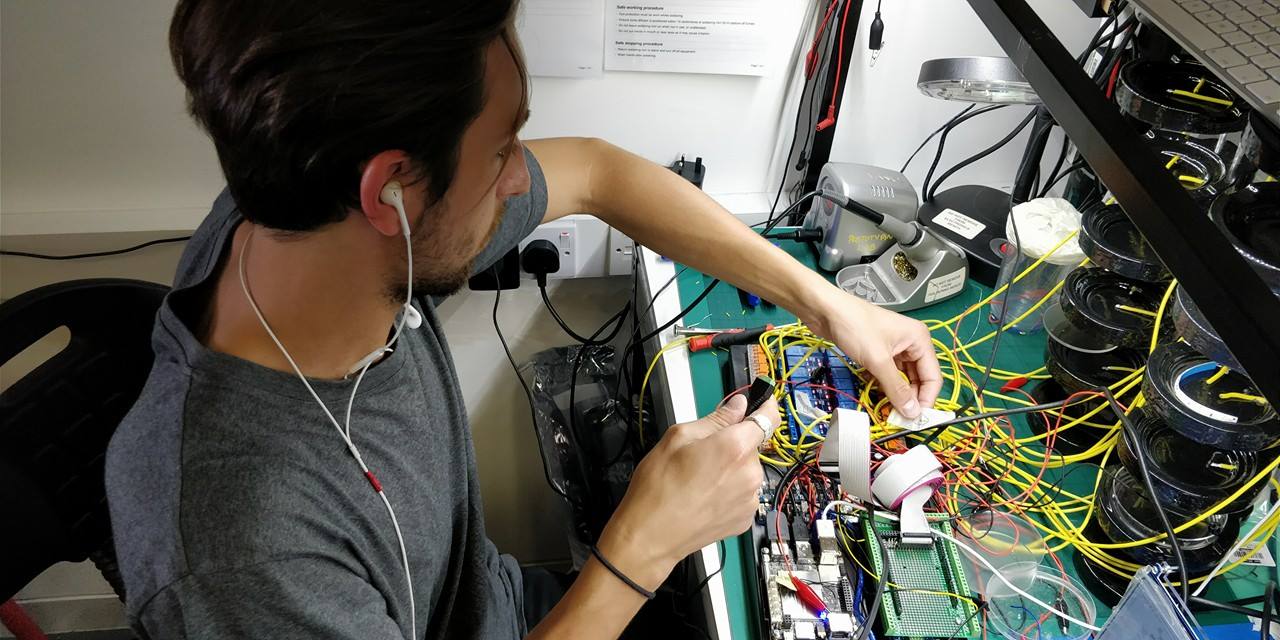Excerpt:
Ctrl is an installation in which 10 Physarum Polycephalum (unicellular organisms also known as slime molds) are competing on John Conway’s Game of Life.
The electrical potential difference of the slime molds at each end of a protoplasmic tube connecting two food source is measured.
These data are then used as spatial coordinates that control the gaming and set the original state of the Game of Life.
At the end of the 10 rounds, the player's moves are analyzed.
An artificial intelligence manipulates their environment by making use of intense light flashes to optimize their behavior.
The electrical potential difference of the slime molds at each end of a protoplasmic tube connecting two food source is measured.
These data are then used as spatial coordinates that control the gaming and set the original state of the Game of Life.
At the end of the 10 rounds, the player's moves are analyzed.
An artificial intelligence manipulates their environment by making use of intense light flashes to optimize their behavior.
How:
Physarum Polycephalum are unicellular organisms capable of locomotion (moving up to 10cm per day) and visible to the naked eye (under the same membrane, multiple nuclei can spread as long as 1meter).
Among its characteristics are: a form of immortality ( as it is embedded in a life cycle with no endpoint) and some extended cognition abilities.
It is a single cell, therefore, it is deprived of a central nervous system or brain-like infrastructure, yet, through its locomotion, it expresses a form of decentralized intelligence.
This feature has made this creature famous for its skills in solving mazes, optimizing routes, and exhibiting memory
Among its characteristics are: a form of immortality ( as it is embedded in a life cycle with no endpoint) and some extended cognition abilities.
It is a single cell, therefore, it is deprived of a central nervous system or brain-like infrastructure, yet, through its locomotion, it expresses a form of decentralized intelligence.
This feature has made this creature famous for its skills in solving mazes, optimizing routes, and exhibiting memory
Lacking a proper skin protecting it against UV lights and eyes providing the essential information to fly away from the sunlight, Physarum Polycephalum has developed a color sensing mechanism.
To communicate with the rest of its body about the direction of light, and in order to inform future locomotion paths, the slime mold densifies its protoplasmic tubes.
When placed between two electrodes, this densification reads as electrical resistance.
This installation makes use of these properties as the computer is modulating light impulses to manipulate the slime mold games.
To communicate with the rest of its body about the direction of light, and in order to inform future locomotion paths, the slime mold densifies its protoplasmic tubes.
When placed between two electrodes, this densification reads as electrical resistance.
This installation makes use of these properties as the computer is modulating light impulses to manipulate the slime mold games.



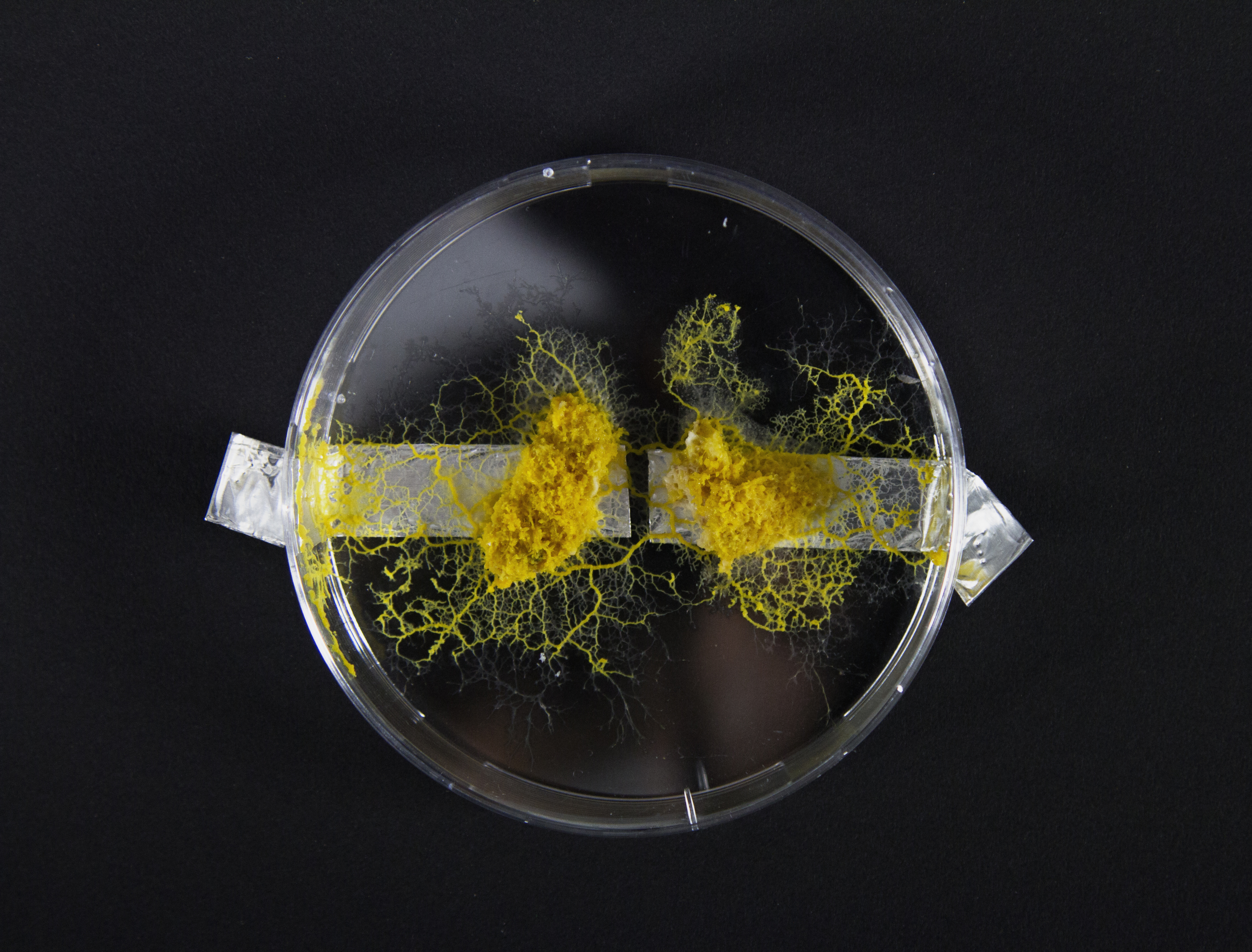
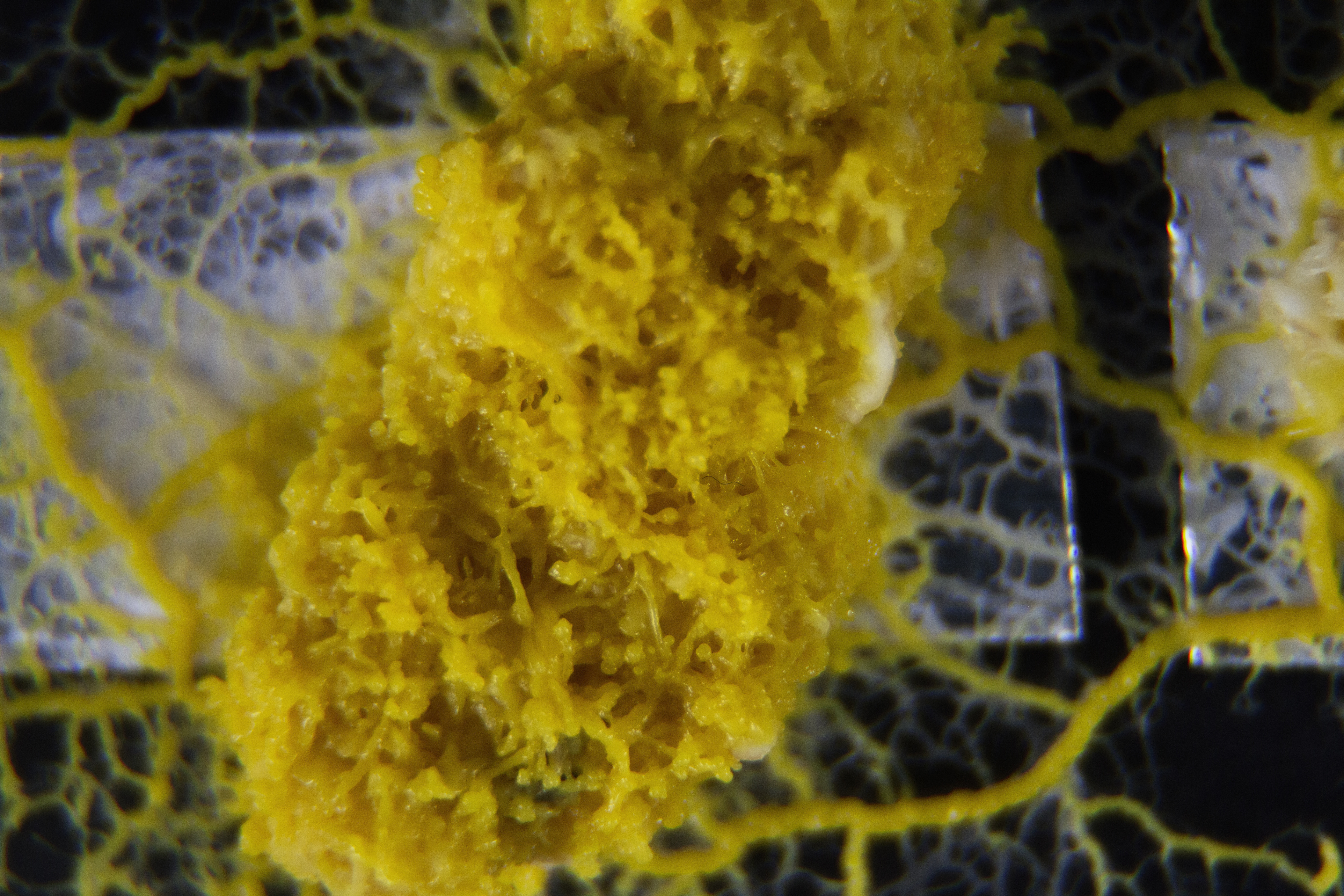

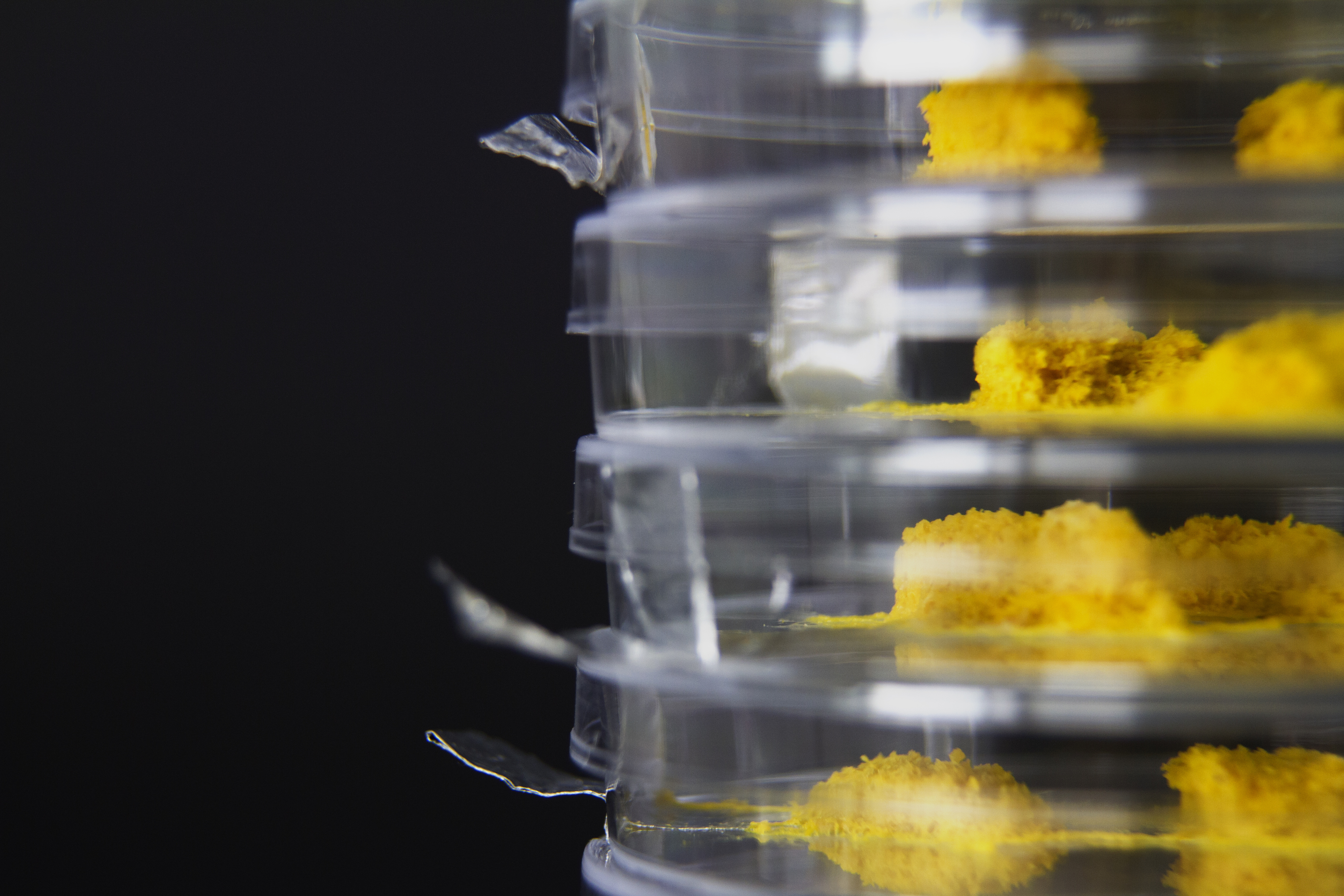
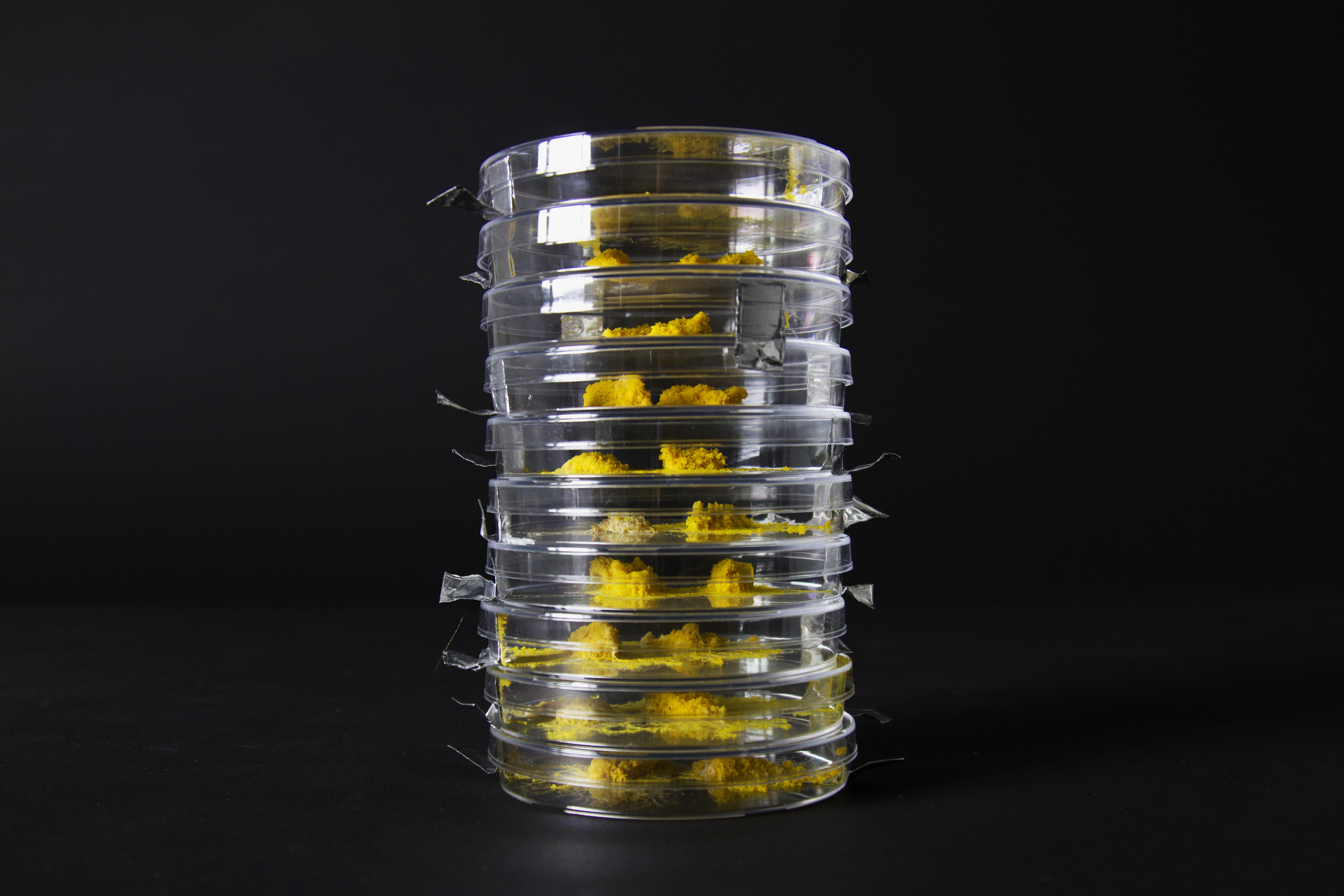

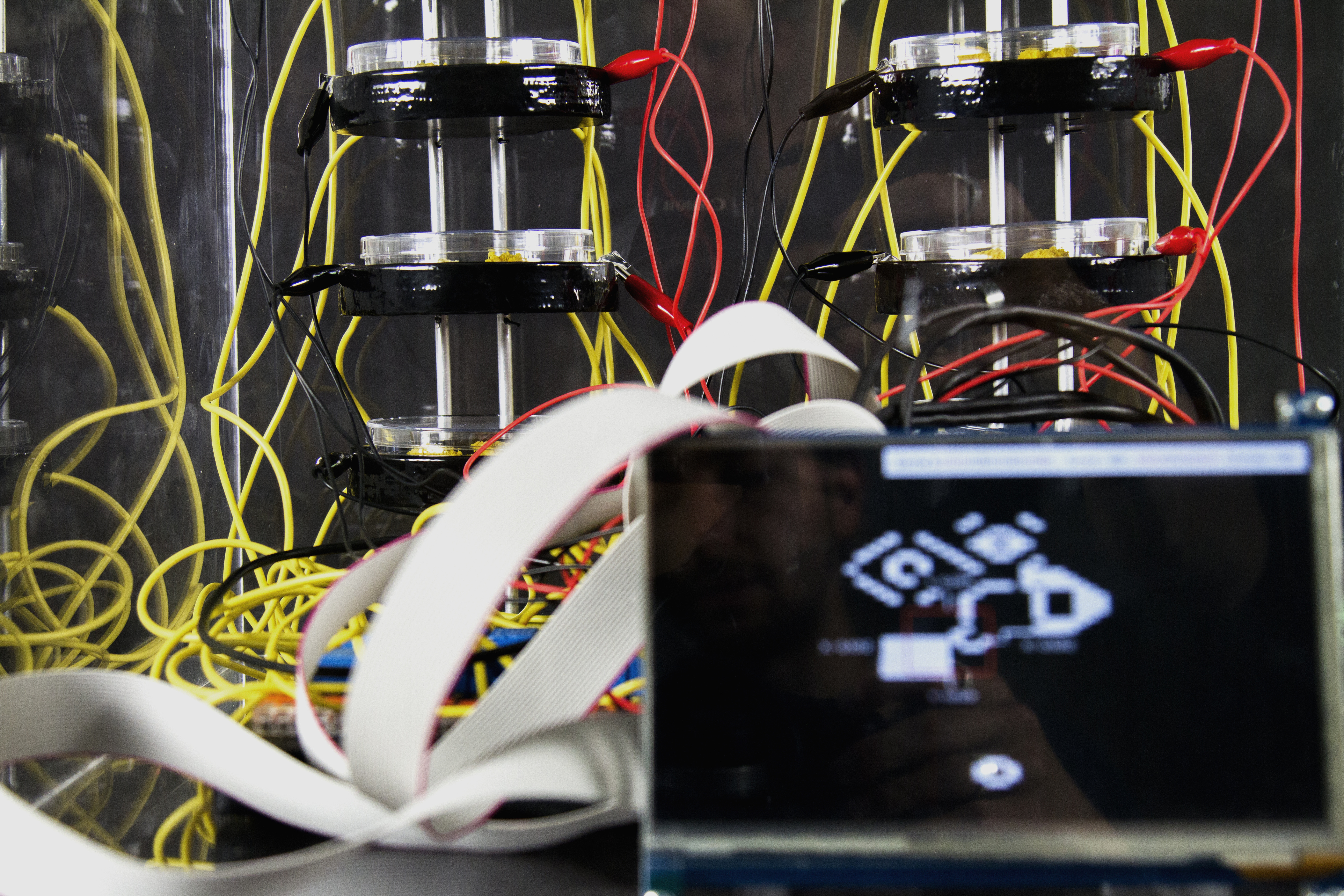

Prototyping:


